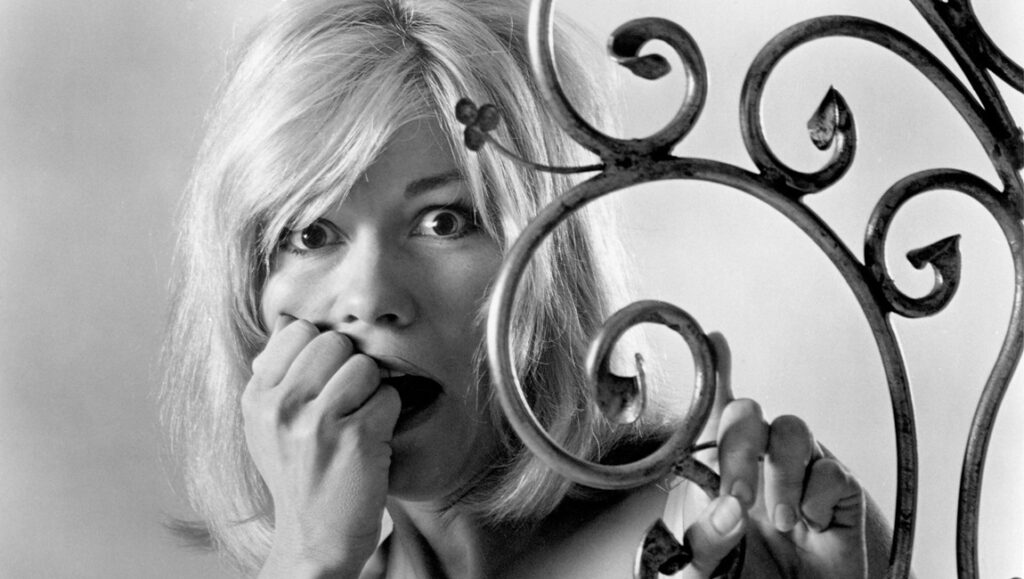Every filmmaker has to start somewhere; for Francis Ford Coppola, like virtually the entire New Hollywood cohort that took the mainstream by storm in the 1970s, that start came courtesy of Roger Corman. The late, great producer/director/showman had an uncanny eye for (cheap, young) talent, and the temperament to leave that talent to its own devices, as long as they provided the requisite amount of sex and violence required to sell low-budget movies to audiences. Coppola, having recently graduated UCLA, bounced around a few odd jobs and found himself involved in re-editing and dubbing cheap nudie pictures. An ad led him to employment with Corman, first as an assistant and then as an editor and sound engineer (he would later say that Corman asked him if he knew anything about sound; Coppola picked up a book on the subject, learned the basics, and said yes to the job). After wrapping production on the 1963 picture The Young Racers, Corman found himself with a surplus budget of $20,000. He offered it to Coppola, provided he could film an appropriate Psycho rip-off. Coppola sold Corman with a brief outline and a description of one of the set pieces, at which point Corman left Coppola and a small crew in Ireland. A few weeks later, Coppola would deliver Dementia 13, his proper debut feature film.
More than just a Psycho riff, Dementia 13 owes a debt to William Castle’s Homicide, as well as all manner of Gothic literature. It’s a proto-slasher, a haunted castle picture, and a whodunit all in one. The film begins with John Haloran (Peter Read) and his wife Louise (Luana Anders) on a boat at night. They’re arguing, and John taunts his bride with a threat — he’s been written out of his rich mother’s will, and if he dies, Louise will get nothing. He promptly has a heart attack, and Louise dumps his body into the water. She decides to hide John’s sudden death from his family while attempting to ingratiate herself to them and curry favor with the mother. Concocting a cover story, writing to the family and inviting herself to their estate while John is “away on business,” Louise arrives in bucolic Ireland and meets Billy Haloran (Bart Patton), his older brother Richard (William Campbell), Richard’s fiancée Kane (Mary Mitchel), and the matriarch, Lady Haloran (Eithne Dunne). Things are strange from the start; Lady Haloran is still obsessed with the death of her youngest daughter, Kathleen, and holds an annual seance in an attempt to commune with her spirit. Louise senses an advantage, and decides to convince Lady Haloran that Kathleen’s spirit is still amongst them. But the plan goes awry when, in the middle of the night, a mysterious figure attacks Louise and kills her with an ax (this reflects the film’s most overt nod to Psycho, dispatching its ostensible protagonist about halfway through). From there, the film switches gears and functions as a sort of mystery; who is the killer? Richard is quick to anger, and despite his stated desire to marry Kane, the couple seems volatile. Patrick Magee is also on hand as the local doctor, who begins poking around the family’s castle. And in what feels mostly like padding, there’s a brief interlude that traces the misadventures of a poacher who will also meet an untimely end at the hands of the madman. Things eventually come to a head with the revelation that Billy is the killer, who accidentally killed Kathleen all those years ago and has been driven mad by guilt.
Dementia 13 delivers a painless, occasionally charming 70-odd minutes. Reportedly, Corman was unhappy with the film after Coppola turned it in, complaining that it was too short to release. Corman would add an odd prologue, shot by Monte Hellman but now excised from the current director’s cut available for home viewing. Whatever the case, Corman and Coppola would mend their relationship, with Corman appearing in a cameo years later in The Godfather Part II. As is common for the genre, and Corman productions in general, the acting is a mixed bag. The cast is largely made up of Corman regulars and a few college buddies that Coppola called in as a favor, but if the film rarely elevates above no-budget curiosity, it’s not without certain merits. Dementia 13 is frequently lovely to look at, filmed in stark, high-contrast black-and-white by Charles Hannawalt (another Corman regular, a long-time grip who curiously is only officially credited as a cinematographer on this one film). It resembles especially the industrial look of Romero’s Night of the Living Dead, which would release just five years later. Meanwhile, the filmmakers maximize the castle location, relishing in the Gothic ambiance and eager to cast ominous shadows over all available surfaces. Several scenes feature characters submerging themselves underwater, and the photography takes on an eerie, opaque quality that adds immeasurably to the proceedings. There are only a couple of death scenes, but both reveal Coppola’s interest in Eisenstein and analytical editing. Critic Filipe Furtado calls Coppola’s direction “imaginative, if studied,” and the film does feel like a student trying out all manner of effects just to see what will work. Coppola would of course return to overt horror iconography with his great adaptation of Bram Stoker’s Dracula, and his years learning the ropes of low-budget production would come in handy later in his career, when returning to lo-fi, hand-crafted projects like Tetro and Twixt. One might reasonably ask if the film would have any reputation at all if its young director didn’t go on to become an Academy Award-winning juggernaut. It’s impossible to say, but it’s undeniably fascinating to try to identify early signs of Coppola’s artistry in this embryonic form. It’s an auspicious debut, if only barely a taste of what was to come over a long, fruitful career.
Published as part of Francis Ford Coppola: As Big As Possible.


Comments are closed.